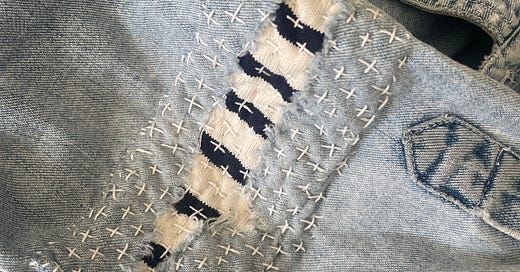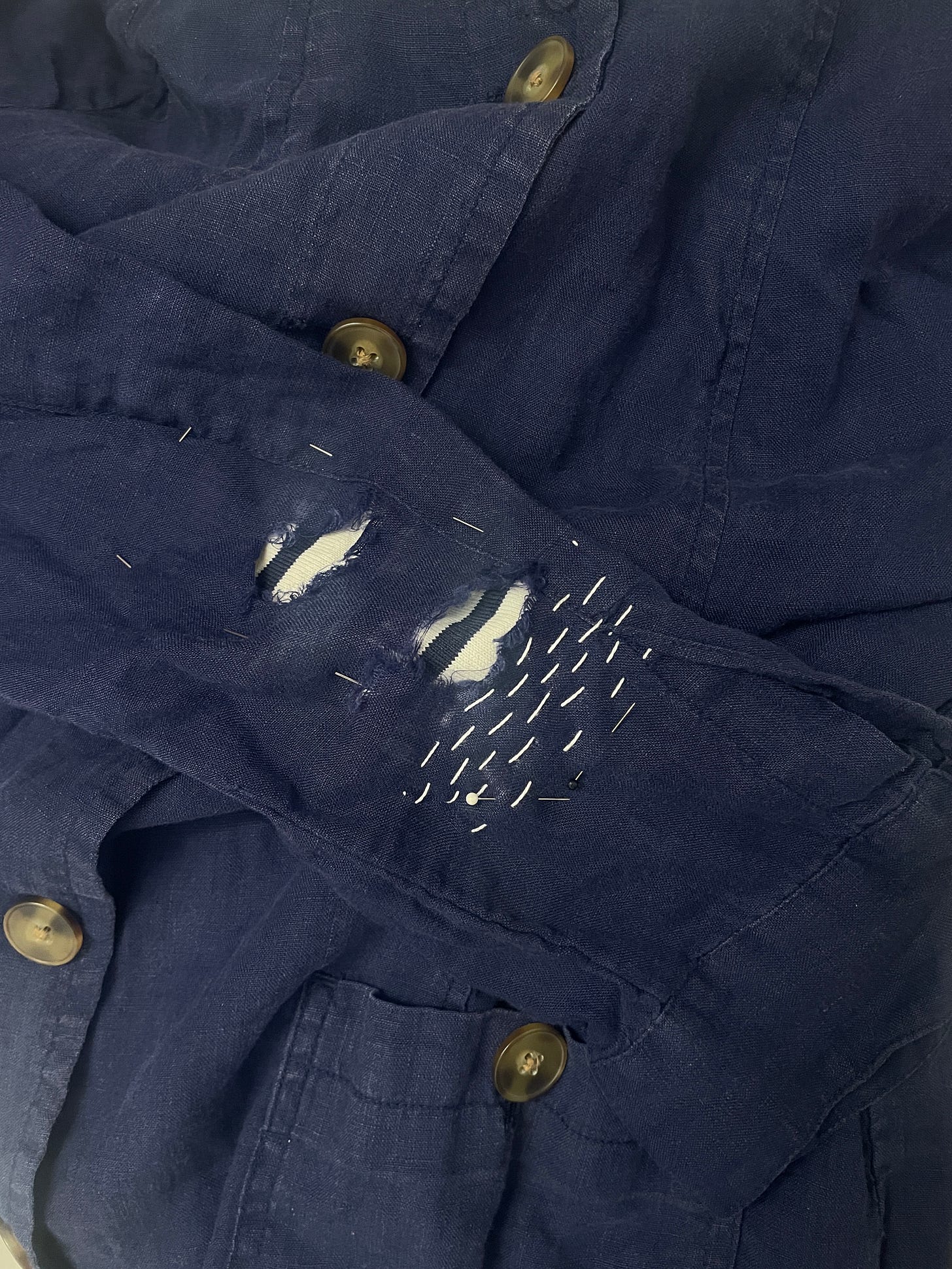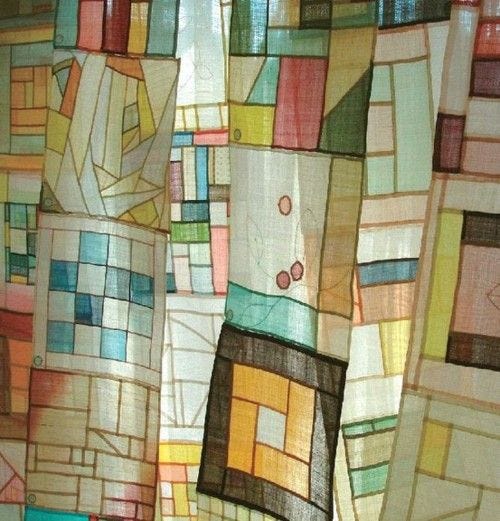Visible Mending
Finally tackling my sky-high mending pile. Instead of trying to hide the repairs I'm opting for visible threads and decorative techniques - it's a work in progress to say the least.
During these quiet winter evenings, you'll find me cozied up on the couch, my favorite period drama humming in the background, while I stitch and stitch and stitch away—mending all my workwear that took a hefty beating last year.
Using Japanese textiles as my inspiration, even my wobbly lines of running stitches help reinforce the fabric, adding lots of strength with minimal materials. My meager attempts are far from perfect, but for me, they enhance the beauty of the garment in the most playful of ways.

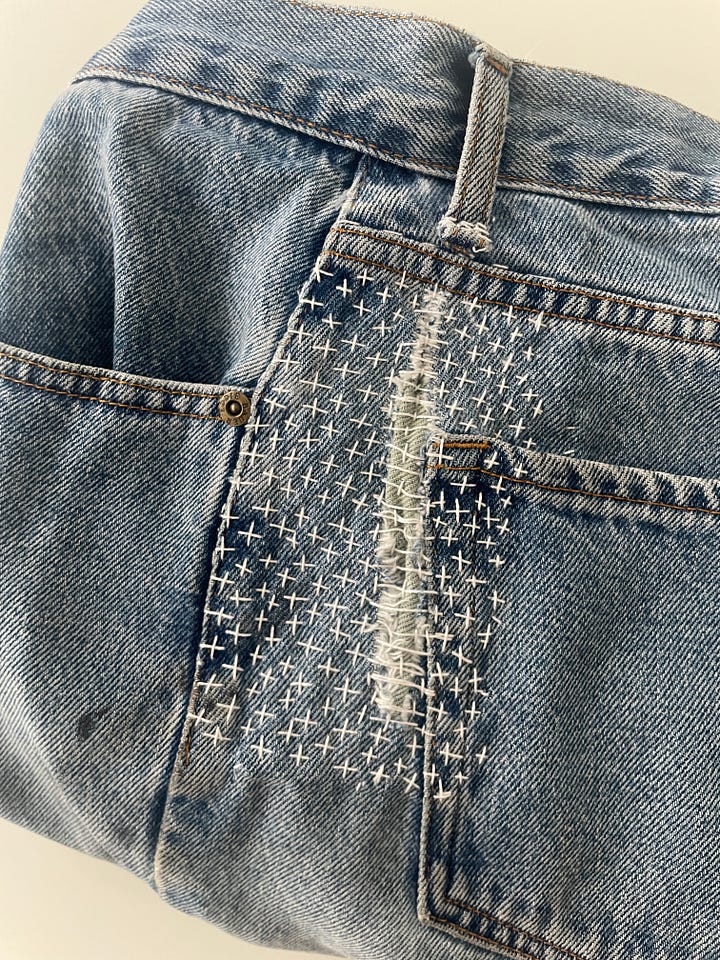
The repetition is a meditation. I really love the slow process of fixing something broken and giving it new life. Always seeking to find conscious solutions that increase the longevity of my garments and reduce waste.
“Mending doesn’t mean we can’t afford to buy something new; it means we can’t afford something being thrown away.” -Orsola de Castro
In our society, it's more common to replace worn-out clothes with cheap, new alternatives rather than repairing them. Unfortunately, tossing those torn and tattered pieces into the waste bin only contributes to landfill waste where they will inevitably sit (especially those made from petroleum-based fabrics like acrylic, nylon, polyester, and spandex) for decades.
While I sincerely value the work of skilled tailors - they can do wonders – I encourage you to dive into some DIY, hone your hand-sewing skills, and turn those flaws into unique features. Have fun with it!
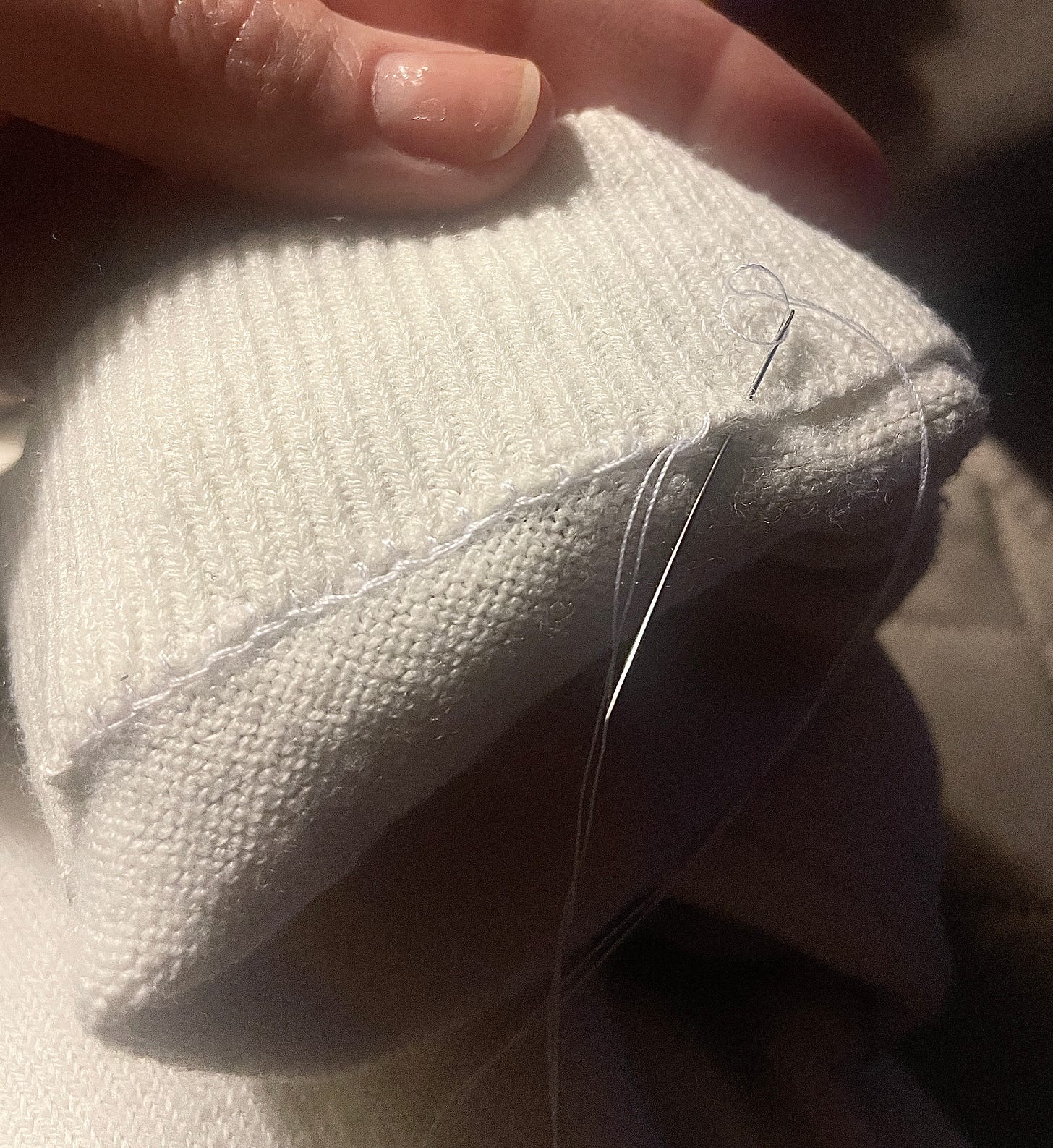
The Technique
Sashiko (刺し子, lit. little stabs) is a type of traditional Japanese embroidery or stitching used for the decorative and/or functional reinforcement of cloth and clothing. Sashiko encompasses all the sewing techniques that can be used to repair and embellish fabric. 1 Sashiko stitching can be divided into two categories.
Hitomezashi creates patterns by following a grid, resulting in a strong geometrical motif.
Moyōzashi constructs shapes from long lines of running stitches for a more fluid design.
The term 'Boro (ぼろ) typically refers to cotton, linen, and hemp materials, mostly hand-woven by peasant farmers, that have been stitched or re-woven together to create an often many-layered material used for warm, practical clothing. 2
This practical art form aligns with two Japanese philosophies - "Wabi-sabi," which encourages finding beauty in imperfection and the passage of time, and "Mottainai," which promotes regret over waste. That’s what it’s all about!
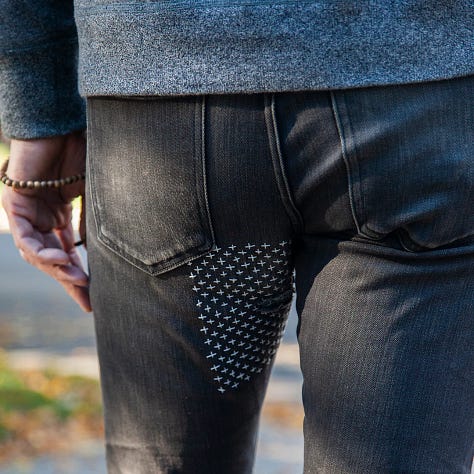

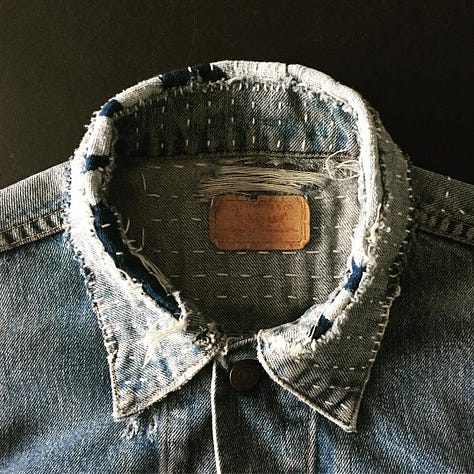
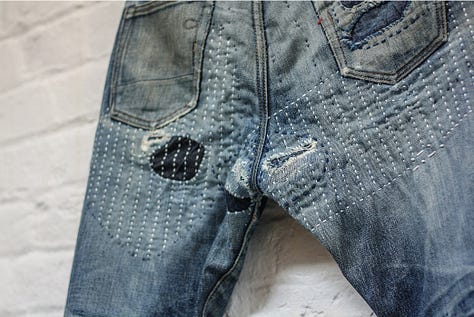
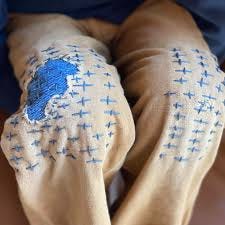
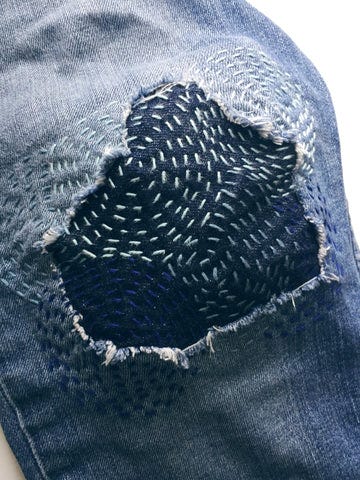
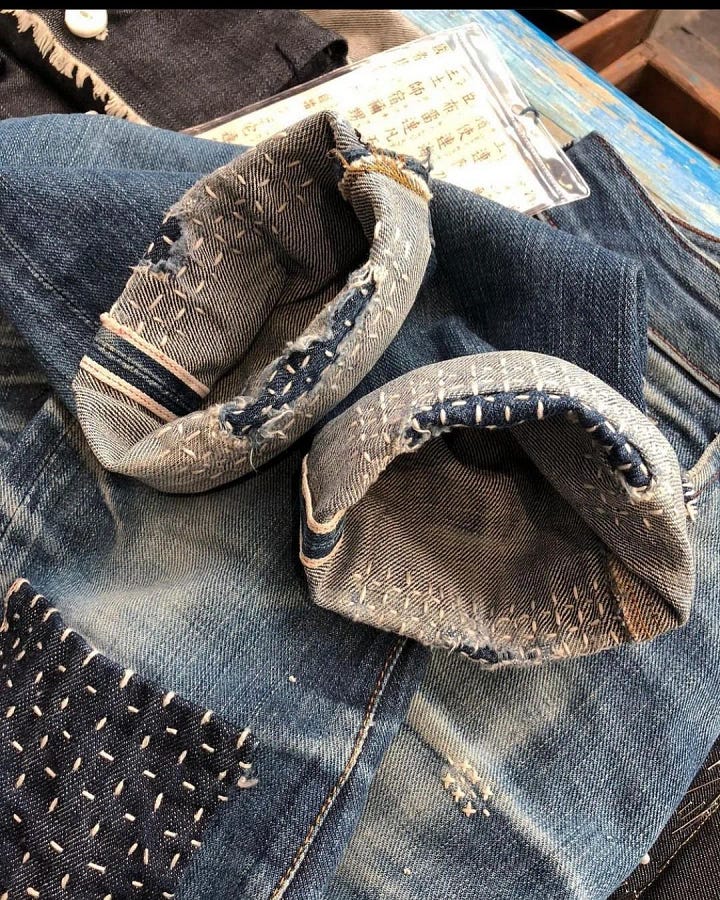

Here are some Beginner SashikoVideos to watch before you dive in:
Basics of Sashiko 1 | Tools, Materials and Alternatives for Beginners - Xiaoxiao Yarn
Basics of Sashiko 2 | Techniques and Tips for Beginners - Xiaoxiao Yarn
CULT DIY // Sashiko Repair - CULT OF ONE
Sashiko Visible mending - mend with style. Sashiko stitching on Denim jeans - The Green Wrapper
Top 5 Basic Sashiko Tips | To enjoy Sashiko Stitching more - 刺し子 物語 & Sashiko Story
Sashiko and Cultural Appropriation // Sashiko Story Vol.10 // Sashiko is more than a trend – video by 刺し子 物語 & Sashiko Story on YouTube
My next mending mission: Jogakbo. A Korean style of patchwork, traditionally used to create domestic wrapping cloths (known as bojagi) from scraps of left-over fabrics.3 My Halmeoni 할머니 (grandmother) has a few pieces I can draw inspiration from, using the clothing beyond repair scraps pile, stay tuned;)
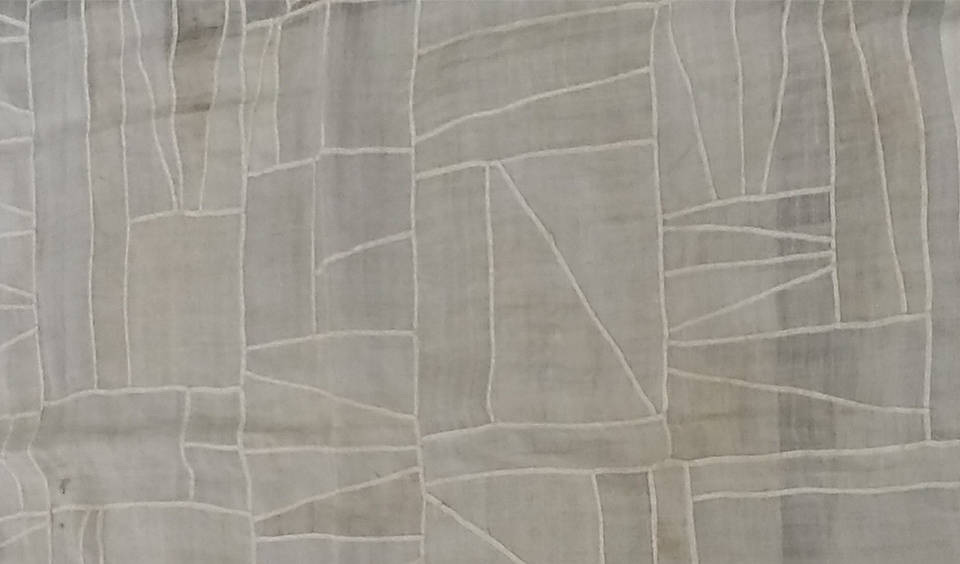
I love spotting visible mending out in the wild—it gives me hope.
Are you a fellow mender? I would love see all your beautiful repairs and techniques. Please tag me or comment below.
https://en.wikipedia.org/wiki/Sashiko
https://en.wikipedia.org/wiki/Boro_(textile)
https://www.vam.ac.uk/articles/jogakbo-traditional-korean-patchwork


